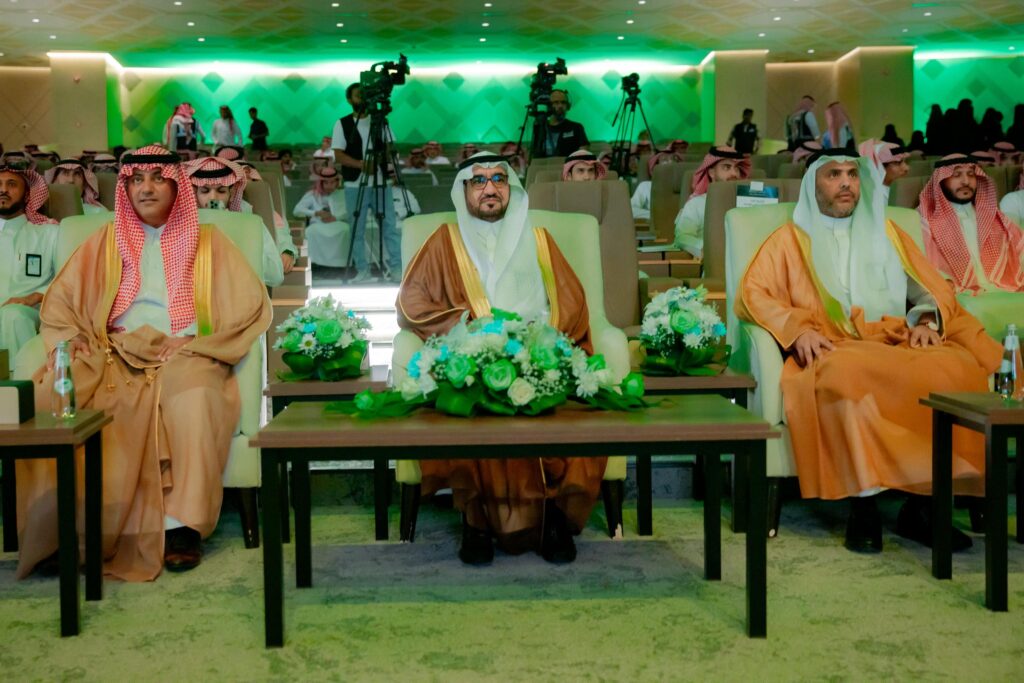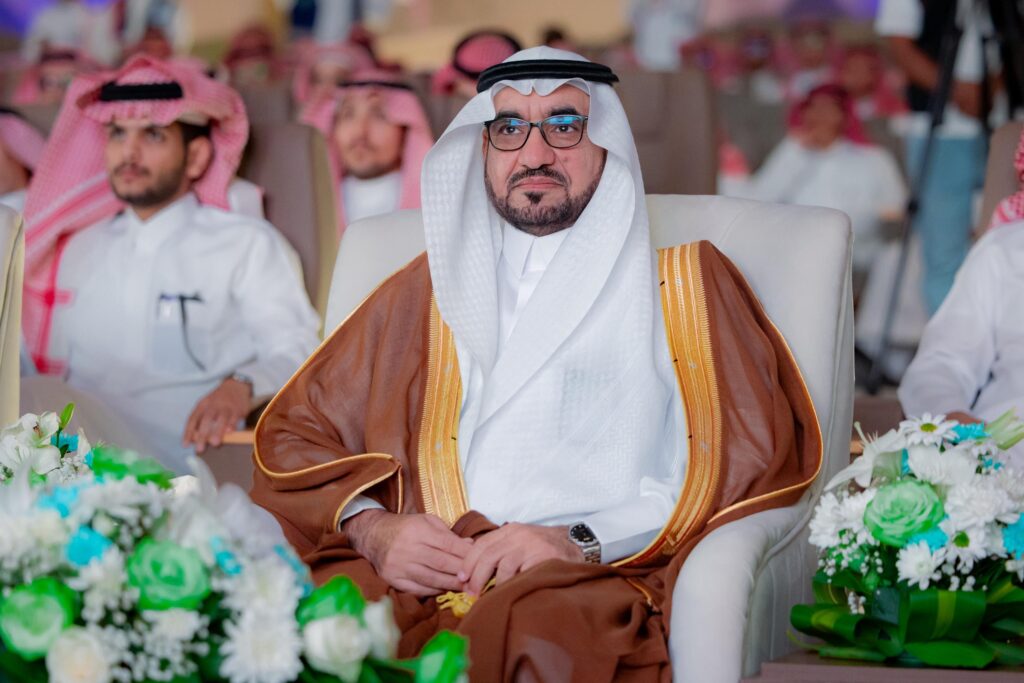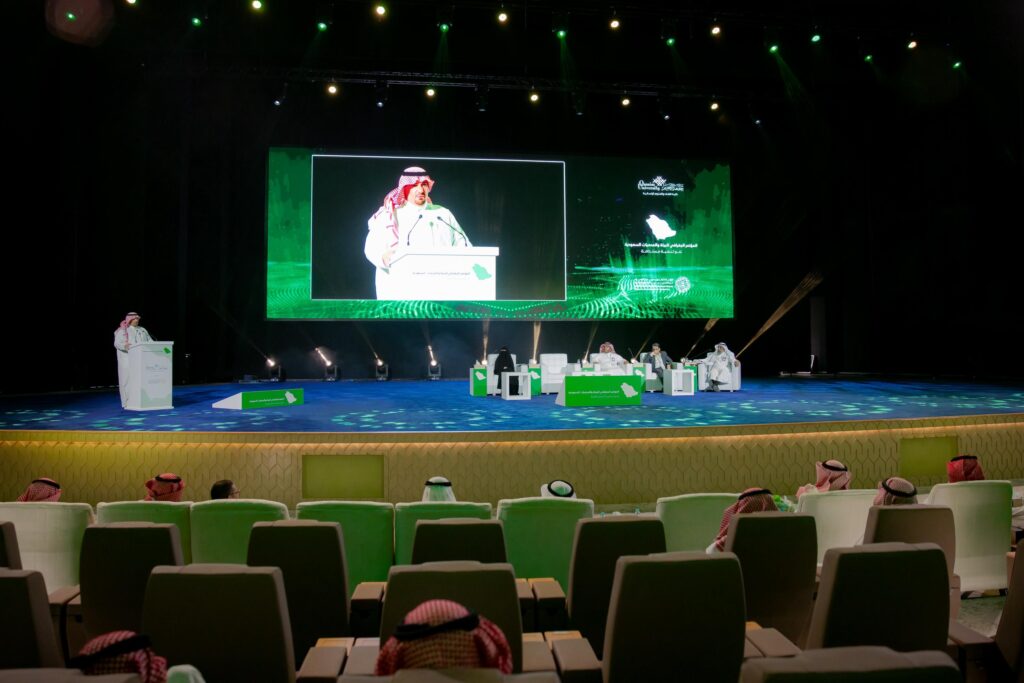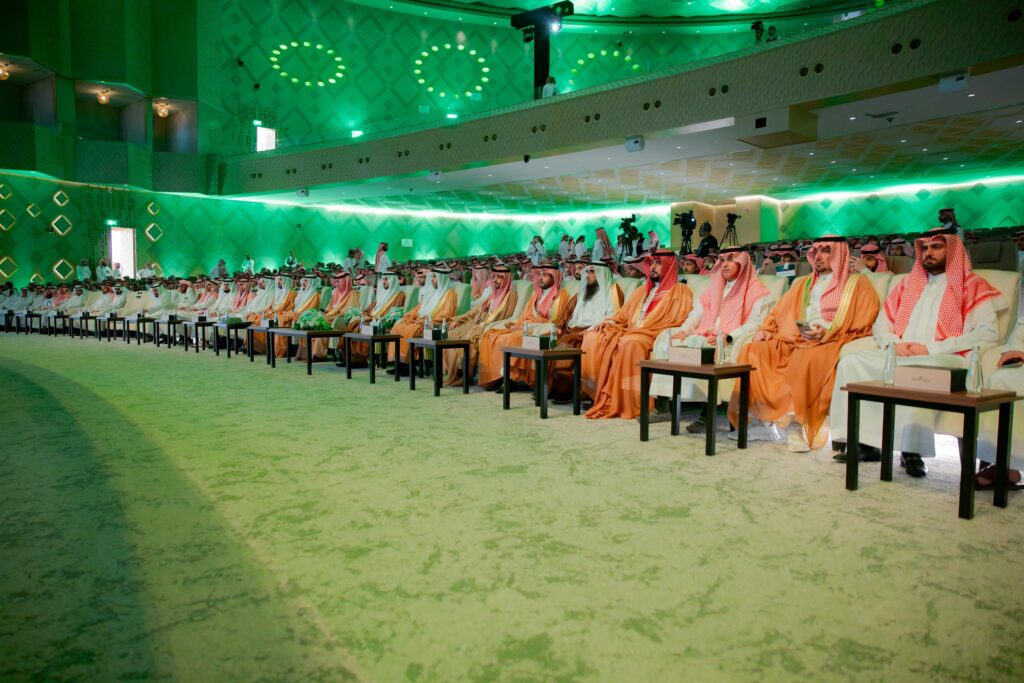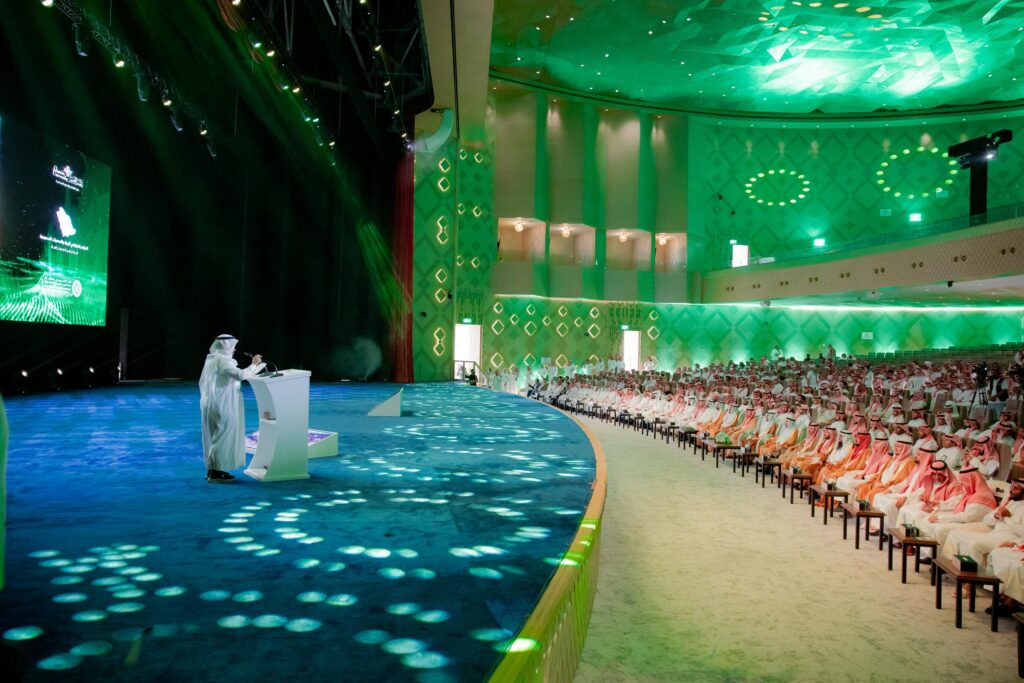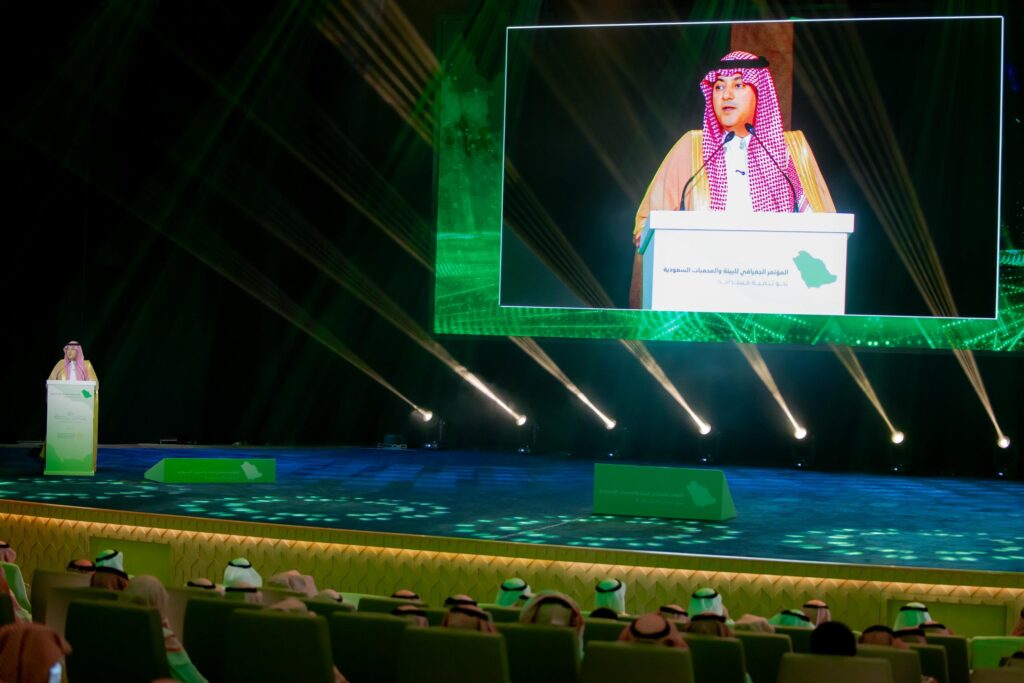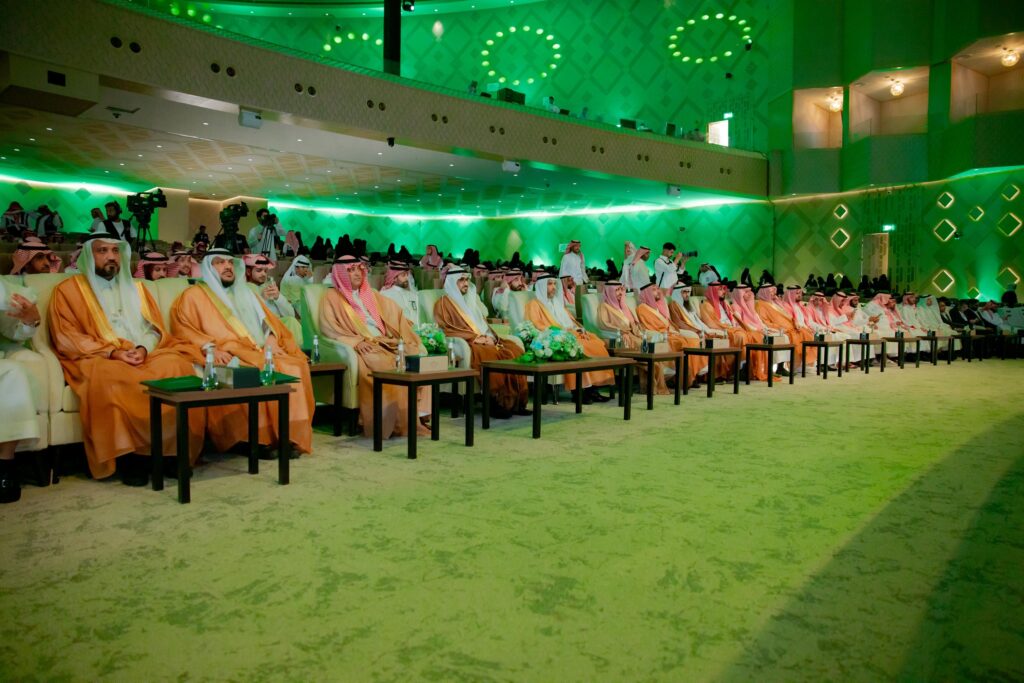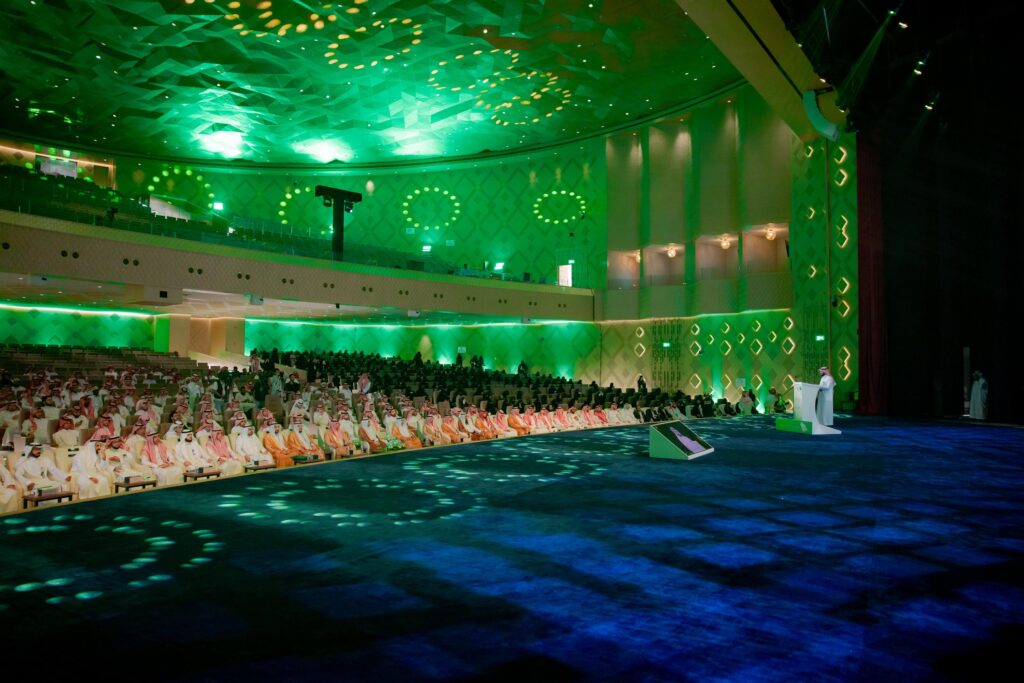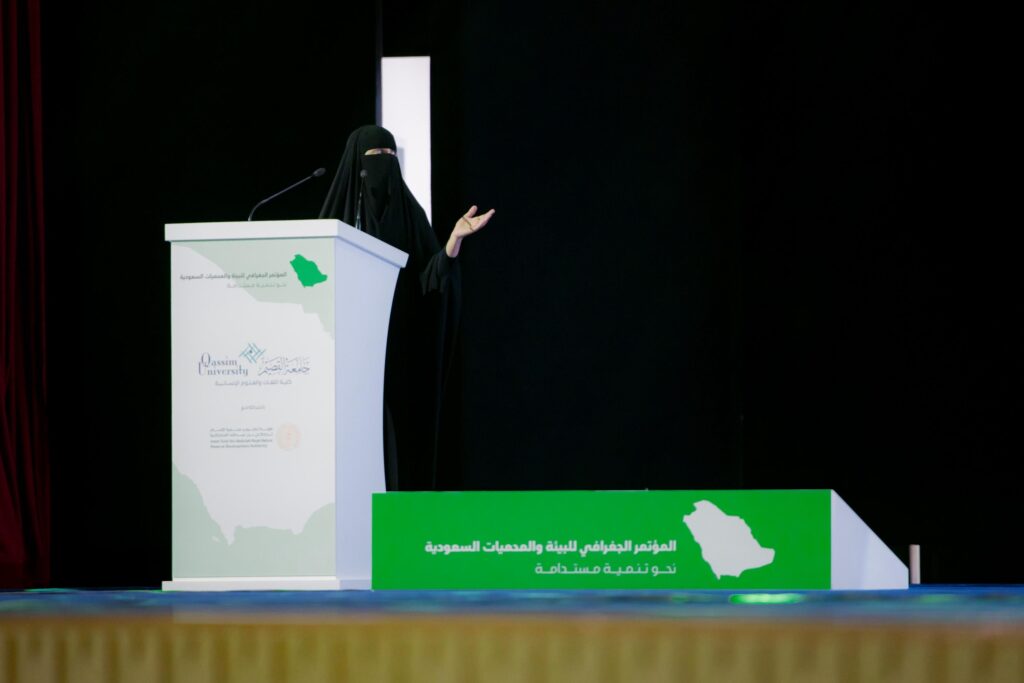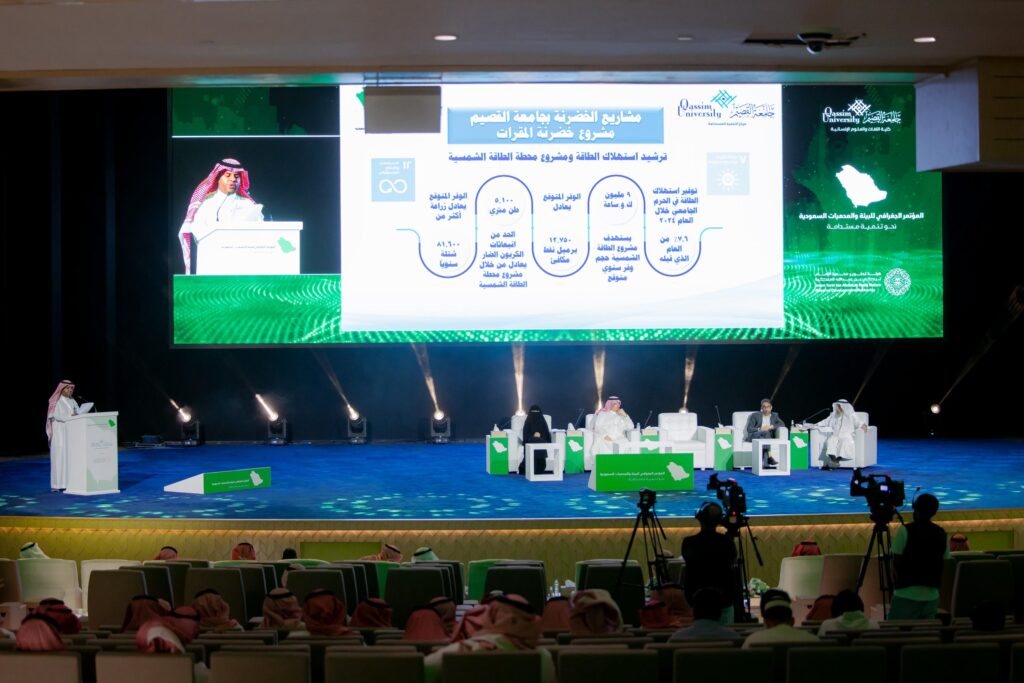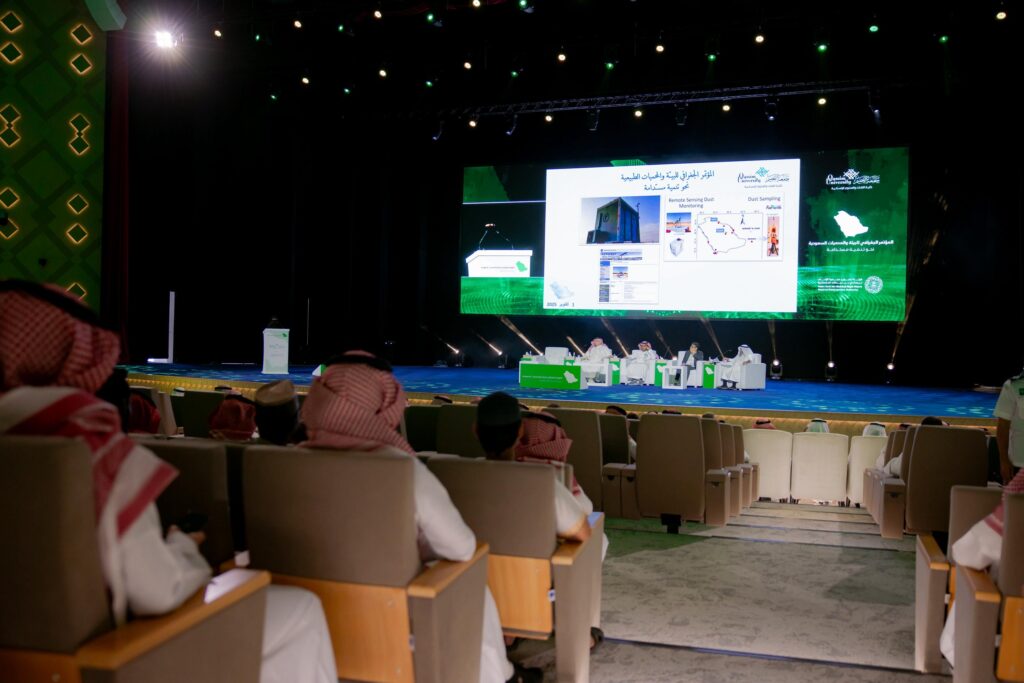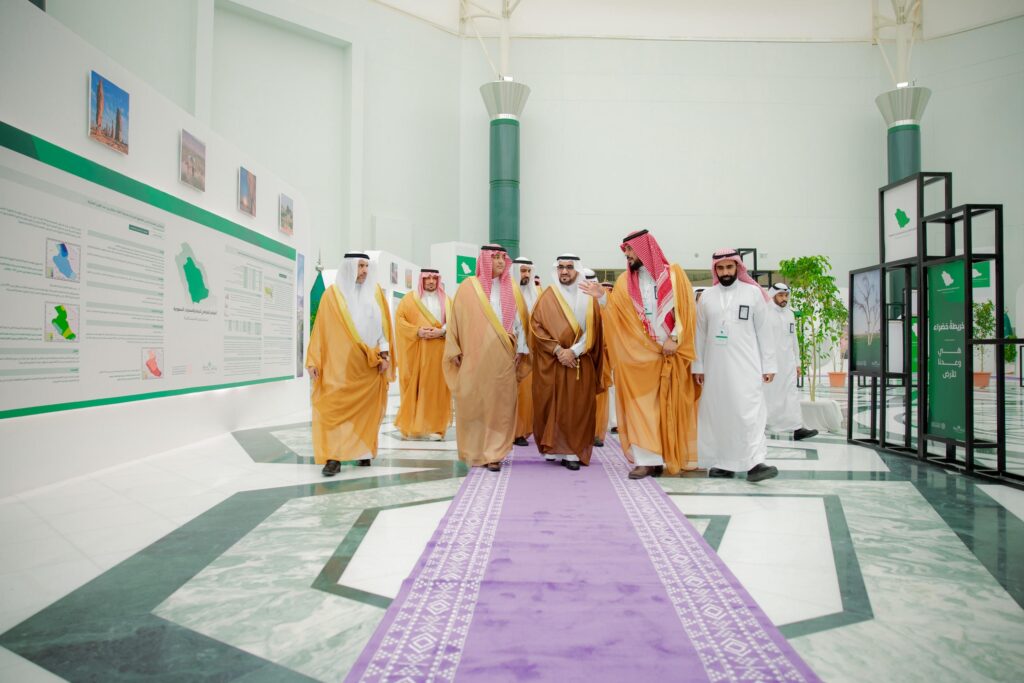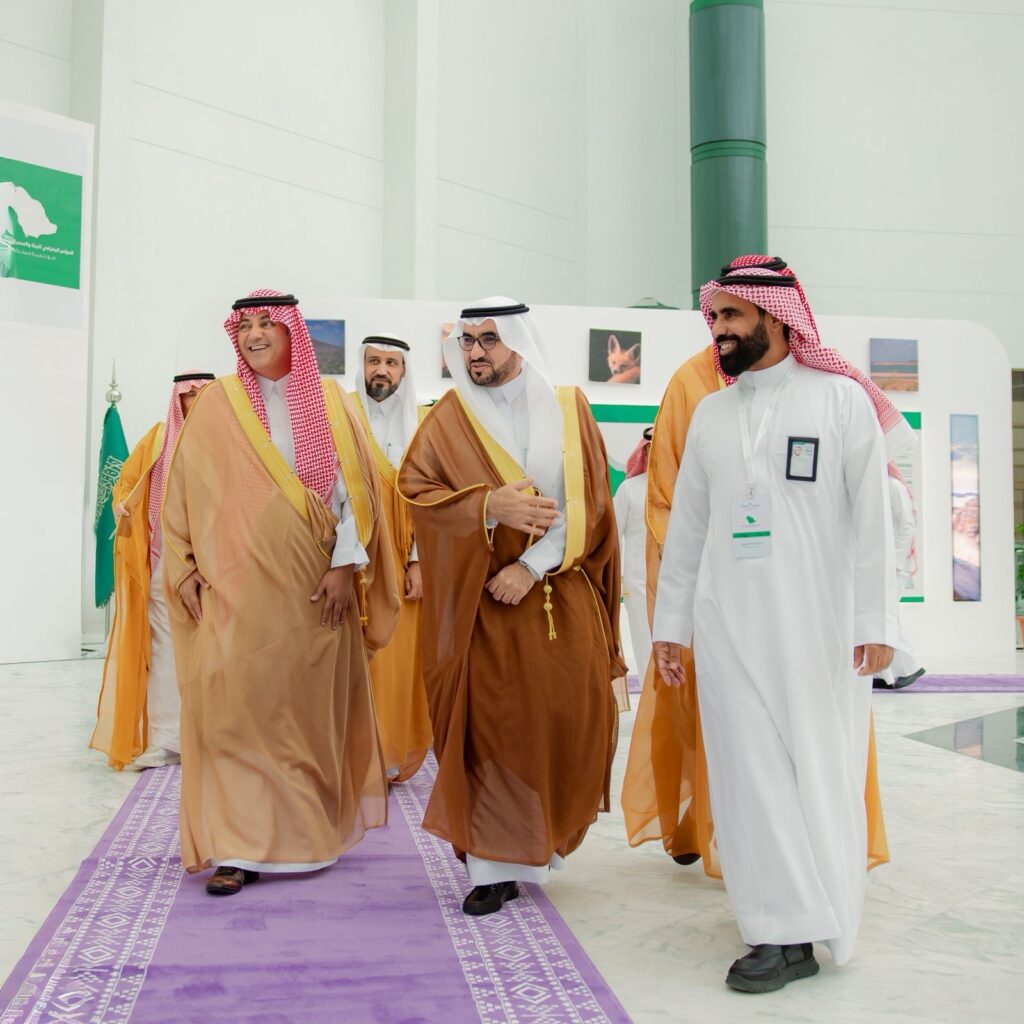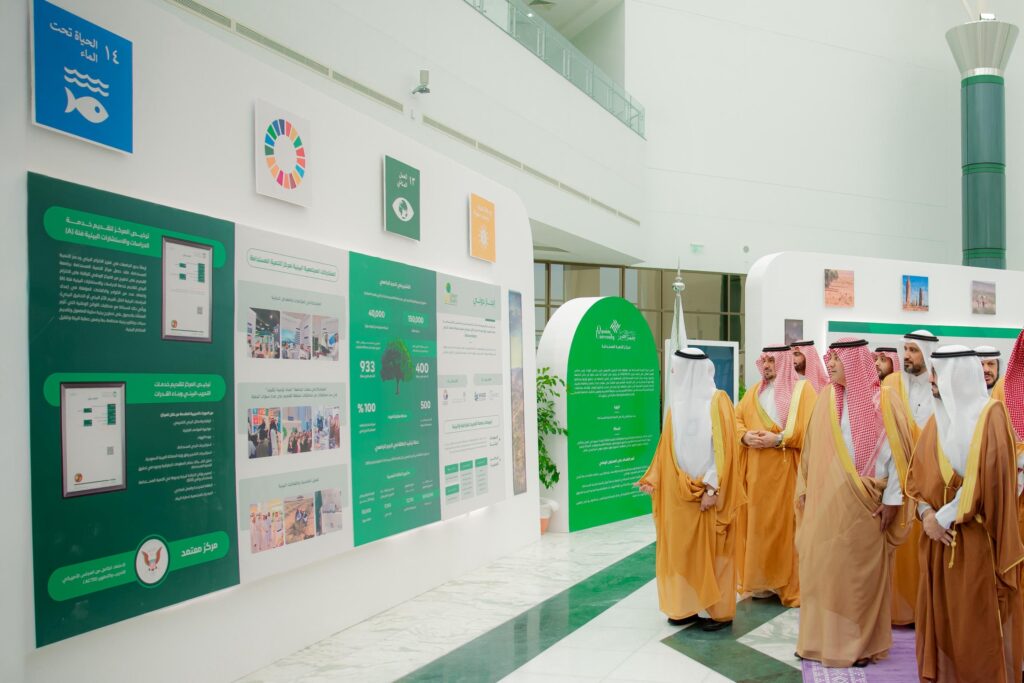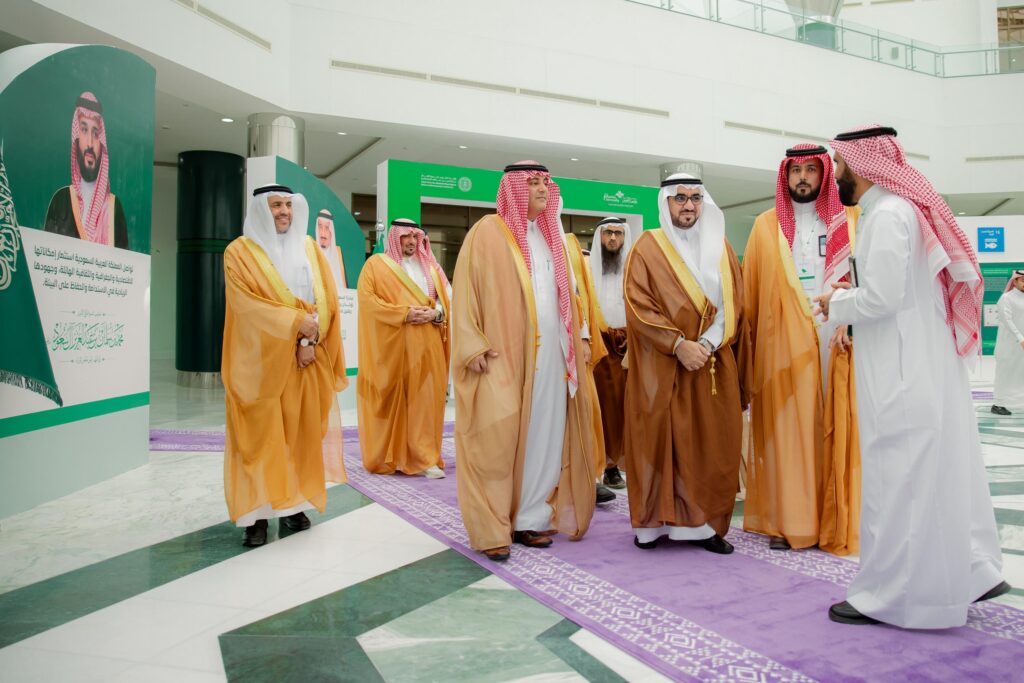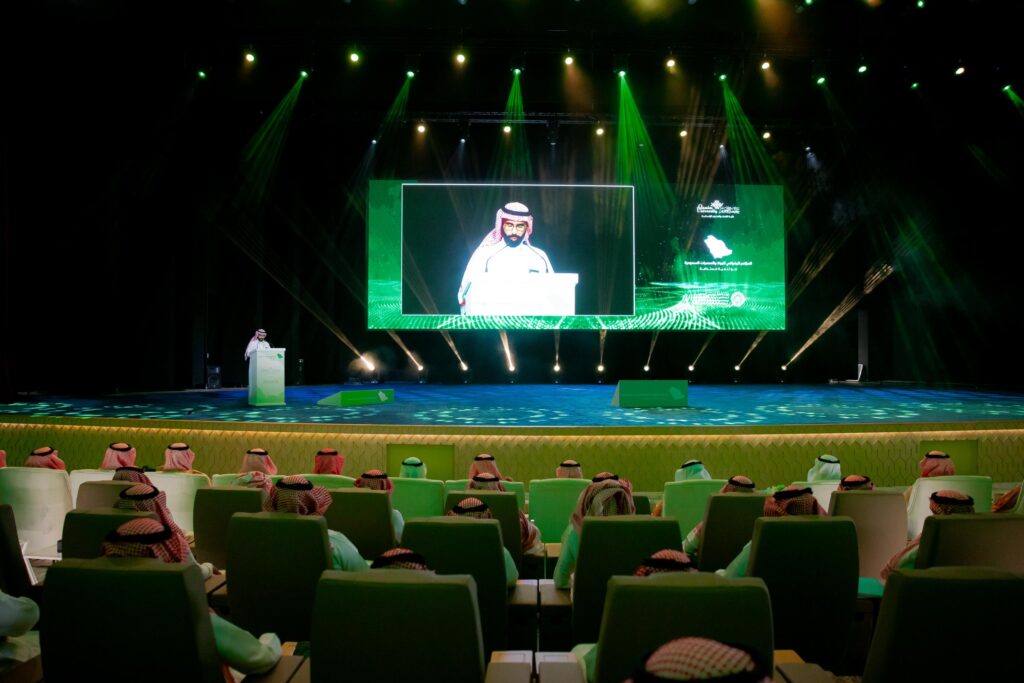His Excellency the President of the University, Prof. Dr. Mohammed bin Fahd Al-Sharekh, sponsored today, Wednesday, October 1, 2025, the "Geographical Conference on the Environment and Saudi Protected Areas: Towards Sustainable Development", which was held by the university, represented by the College of Languages and Humanities, in partnership with the Imam Turki bin Abdullah Royal Reserve Development Authority and with the participation of several entities, in the presence of His Excellency the CEO of the Authority, Engineer Mohammed bin Abdulrahman Al-Shaalan, and the university vice presidents at the King Abdulaziz Conference Center in the university city.
He stressed the importance of intensifying studies and research to support national efforts in the field of environment and sustainability, noting that organizing such conferences reflects the role of the university and its scientific mission in serving environmental issues.
Al-Sharekh added that this conference comes within the university's responsibilities and role in promoting scientific research in various fields and benefiting from its outputs to achieve the goals of Saudi Vision 2030, by encouraging researchers and holding such scientific conferences and coming up with results and recommendations that can be applied on the ground.
The university president witnessed the conclusion of the conference, where he honored the speakers from the experts and specialists, as well as the organizing committees of the conference, expressing his thanks and appreciation to all the participants in the conference from the researchers, and reviewed the accompanying exhibition of research posters, in which the students of the Department of Geography participated.
The conference included two main sessions, where the first session dealt with the theme of Saudi royal reserves, and discussed the geographical contributions to the development of reserves, biodiversity, resettlement of plant and animal species, distribution of invasive species, the role of local communities and geographical and cultural heritage in preserving biodiversity and restoring natural habitats, sustainable ecotourism in reserves, the role of remote sensing, GIS and digital transformation in managing, monitoring and sustainability of reserves, water resources management and flood risk prevention in reserves.
The second session dealt with Green Saudi Arabia and environmental sustainability, the role of geographic information systems and remote sensing in rehabilitating land and restoring natural green spaces in the Kingdom of Saudi Arabia, air, water and soil quality control, local community initiatives and civil societies in environmental sustainability, the Green Initiative - opportunities and challenges, climate change and adaptation, sustainable urban and rural planning and development challenges.
The conference aimed to highlight the role of geographical studies in maintaining the sustainability of the environment, enhancing environmental belonging and the role of royal reserves in preserving environmental components, demonstrating the effectiveness of sensing techniques and GIS in protecting the environment, spreading environmental culture and strengthening the relationship between local communities and natural environments, supporting initiatives that serve the Saudi Green Vision, and studies related to climate change and air quality control.
At the conclusion of the conference, the university signed a memorandum of understanding with the Imam Turki bin Abdullah Royal Reserve Development Authority to enhance cooperation in the fields of scientific research and environmental awareness, signed by the university president and the CEO of the authority.

